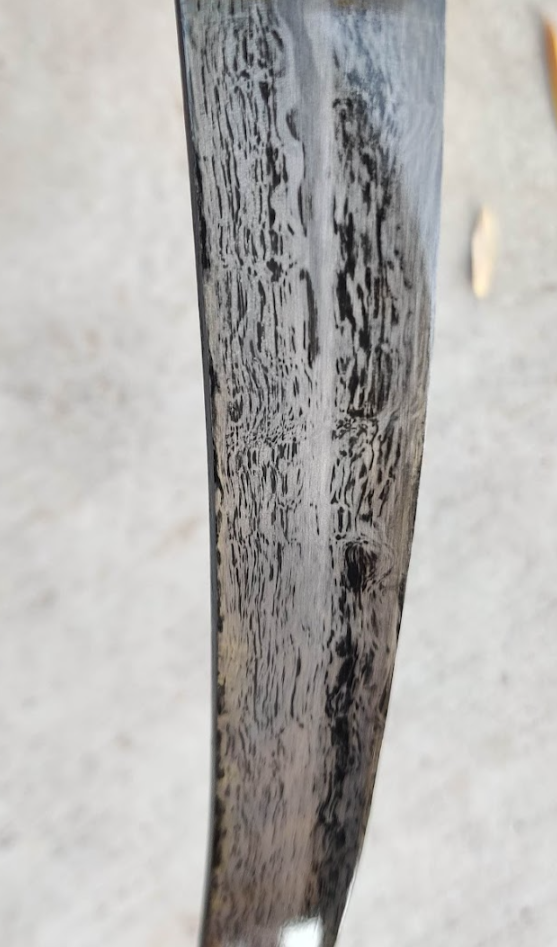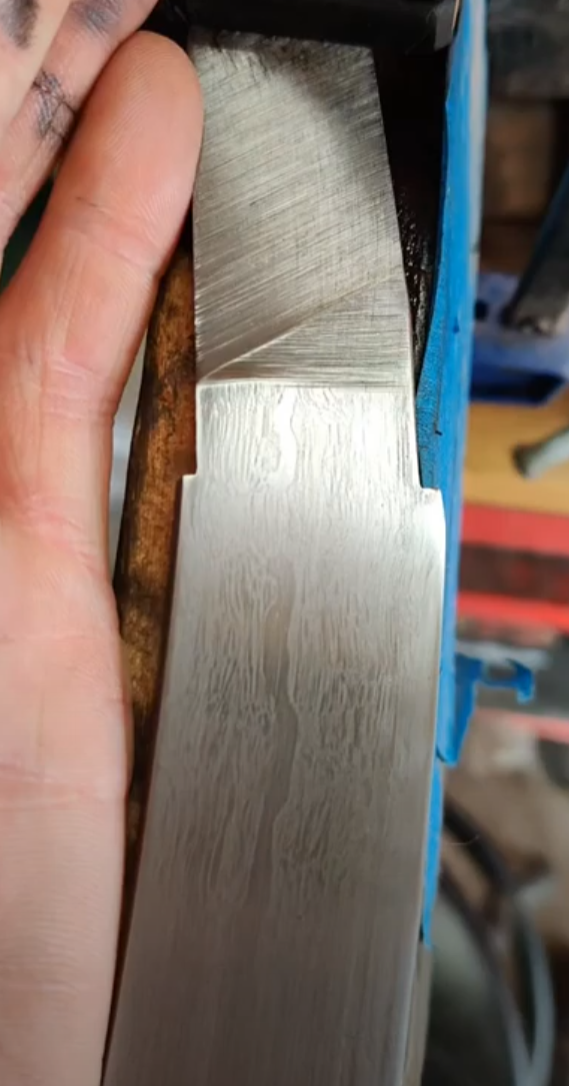Quote from Jacob Christian on June 23, 2022, 4:26 pmIn historical blades, Phosphorus and sulfur were present in at least some level. Both can be detrimental to the performance of the blade and can also make forging quite difficult.
In Pendray and Verhoevens research articles, they experimented with different levels of Phosphorus and came to determine that only low levels are needed. Anything beyond .03% P caused too many problems. Of the problems, hot shortness was a big deal, it made ingots crumble like wet sand when they were heated beyond an orange color.
I am not claiming to fully understand how P works in wootz and the metallurgy around it but I have experimented with my own ingots. In the ingot below, I calculated a P content of .07-.09%. After the initial roast, I kept the forging temperature down below orange heat (about 1000C). There was a little bit of an issue with the ingot cracking but the cracks were removed with a grinder and forging continued. This particular piece was forged into a tanto sunobe with the help of a 25 ton hydraulic press. The sunobe was then hammered out by hand into the final tanto shape. The nice thing about wootz is the more it is hammered, the easier it becomes to work. After etching in 5% diluted nitric acid, the blade showed a courser pattern with long white streaks running throughout. The white streaks are indicative of high levels of P.
Please enjoy the photos and ask any questions you may have.
-Jacob Christian
In historical blades, Phosphorus and sulfur were present in at least some level. Both can be detrimental to the performance of the blade and can also make forging quite difficult.
In Pendray and Verhoevens research articles, they experimented with different levels of Phosphorus and came to determine that only low levels are needed. Anything beyond .03% P caused too many problems. Of the problems, hot shortness was a big deal, it made ingots crumble like wet sand when they were heated beyond an orange color.
I am not claiming to fully understand how P works in wootz and the metallurgy around it but I have experimented with my own ingots. In the ingot below, I calculated a P content of .07-.09%. After the initial roast, I kept the forging temperature down below orange heat (about 1000C). There was a little bit of an issue with the ingot cracking but the cracks were removed with a grinder and forging continued. This particular piece was forged into a tanto sunobe with the help of a 25 ton hydraulic press. The sunobe was then hammered out by hand into the final tanto shape. The nice thing about wootz is the more it is hammered, the easier it becomes to work. After etching in 5% diluted nitric acid, the blade showed a courser pattern with long white streaks running throughout. The white streaks are indicative of high levels of P.
Please enjoy the photos and ask any questions you may have.



-Jacob Christian
Uploaded files:Quote from Jacob Christian on October 26, 2023, 7:12 amFinished Piece
Finished Piece